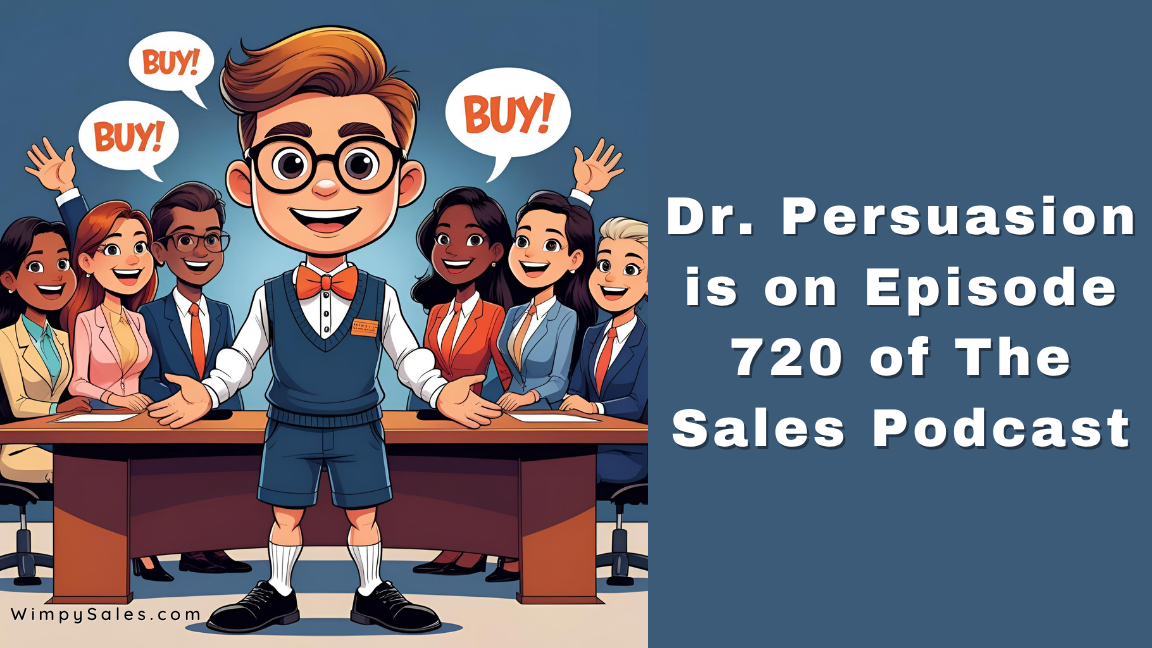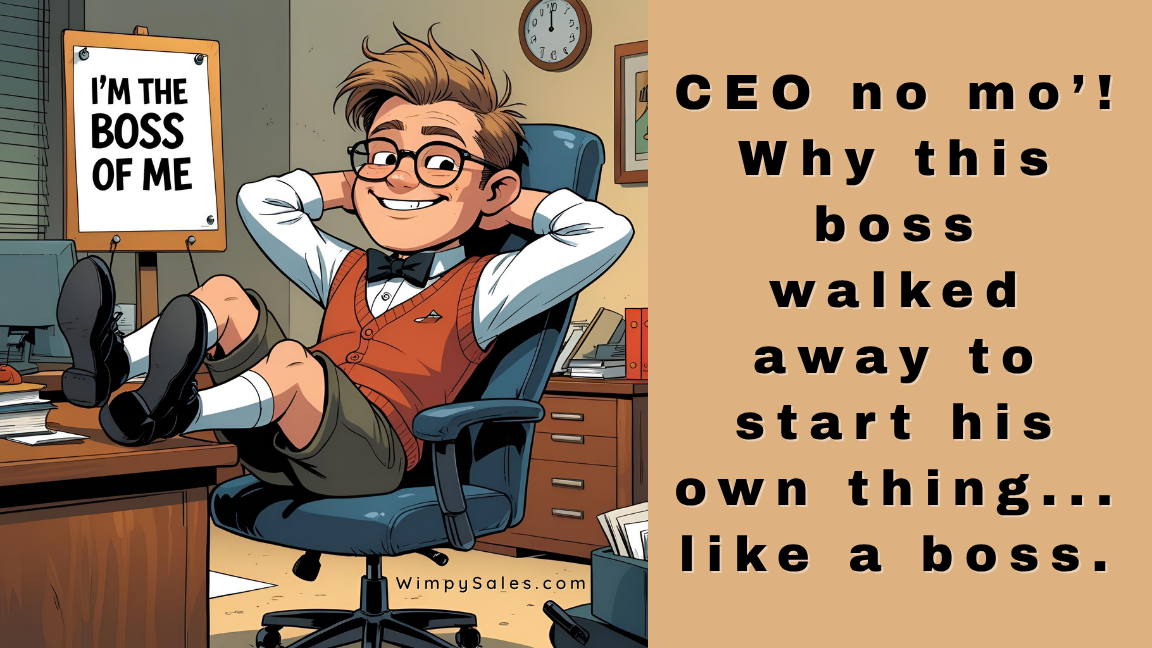
The Four Outcomes From Your Business Proposal (Three Are Bad)

 Duffy Daugherty was a great coach for the Michigan State Spartans and lead them to two national championships in the '60's.
Duffy Daugherty was a great coach for the Michigan State Spartans and lead them to two national championships in the '60's.
He was a fan of running the football because
Three things can happen when you put a ball in the air—and two of them are bad."
By that he meant when you threw the ball it would either be:
- Dropped,
- Intercepted, or
- Caught for a gain (the desired result.)
The same can be said for submitting business proposals.
When typical salespeople submit a proposal, four things can happen, and two of them are bad:
- It is rejected.
- It is negotiated down.
- It is shopped around to your competitors.
- It is accepted.
Your Sales Proposal Process Is Killing You
That is why I cringe when I hear salespeople and sales managers tell me with pride how busy they are creating and sending proposals.
You stay in business and grow your business and grow your commissions by selling more deals at higher margins faster than you did the day before, which is why the way you are giving proposals today GUARANTEES you will struggle to make it in business.
The other day a friend of mine asked me how to resurrect a deal after the prospect had gone dark, which happened right after my friend provided his usual proposal.
Not only had he provided the typical proposal, but he had also provided references, met to review the proposal, and even agreed to meet on a Saturday so as not to inconvenience the prospect. (Can you see where this is headed?)
Repeat after me:
"PROPOSALS ARE NOT FISHING EXPEDITIONS!"
How To Give a Sales Proposal
In order to understand how to give a sales proposal, you must first understand what a proposal is and the purpose it serves.
When you meet with a prospect, you probably think they are a great fit for what you offer because it appears they have a need, and you have a need—to make a sale.
So you do your dance and dog and pony show...
They act impressed and mildly interested...
You can tell because you asked them if they'd like a proposal and they said: "Sure. Why not?"...
You work tirelessly for hours and days to put together a whiz-bang proposal...
Fire it off to your "hot" prospect...
And then it's crickets.
Welcome to what Oren Klaff would call a "beta trap."
The Alpha prospect put you in timeout in the corner, and like Brazilian Jiu-Jitsu, the best way to defeat a punishing move...is to recognize it's coming and prevent it from happening in the first place!
To close big deals, you must quote big deals.
To justify quoting a big deal, you must solve a big pain.
To solve a big pain, you must diagnose the cause of the pain that is hurting your prospect.
To have your prospect follow your prescription as outlined in your proposal, they must admit they have a big pain, and they must quantify it.
Yes, Wes, this is costing us $5,000 per month, and it has been a problem for the last six months, and we see no way to make it stop."Yes, Wes, this has cost us $100,000 over the last year in lost sales plus turnover in our staff, and we're at risk of losing our largest client if we don't resolve this during the current quarter."
Once the person that controls the purse strings has...
- confirmed their pain,
- put a dollar amount on that pain and
- has admitted they must do something about it now,...
...then, and only then, will I submit a proposal as a confirmation step—a summary of what we've agreed to—instead of a sales/persuasion/negotiation step.
Furthermore, I want to submit fewer proposals this year than last year!
Wait, Wes! What?"
Go ahead. Tell me what you're thinking.
"But, Wes! I have to give proposals to get an order. That's how things are done. Prospects meet with us or find us online. They call or email asking for a proposal and I give it to them. Sure, some disappear (and probably use my quote to get a better deal with a competitor) and some come back wanting me to change it (often at a lower price). But if I don't submit proposals how will I make sales? This is how we start the dance."
Do you see the problem here?
You incorrectly use proposals as a:
- "Quote and hope."
- Hail Mary.
- Wham, Bam, thank you, Ma'am shortcut.
- One-step sales tool.
- Beta's response to the demands of the Alpha prospect. (If they're calling you for a quote, the chances are good that they are simply price-shopping, which means someone other than you [think competition] is telling them what they need.
None of these will work out well, nor will they lead to longevity and stability in your sales career.
When done properly, the proposal should be given at the end of a thorough dialogue with the prospect who both admits his issues and has quantified their impact on his bottom line.
Until your prospect says, "I have a problem, and it's costing X dollars," you've not reached a mutual agreement as to how best to proceed to solve his issues.
From now on, have the discipline to slow down and refuse to give a proposal until the prospect answers at least a few rudimentary questions about her situation, so you be sure what you offer is
- a fit,
- affordable, and
- not just some silly exercise where you are being used as that "third bid" to meet the needs of the prospect's CFO.
In other words, if you are using proposals to "poke and prod and explore and fish" the needs of the prospect, you have lost control of the sales process.
"But, Wes! Prospects are so demanding. The competition is so tough. If I don't give them a quote as soon as they ask for it, they'll call the guys across the street, and I'll lose the deal!"
Really?
How much does it cost to create a proposal?
Take your salary and that of everyone who must review/contribute to the creation of your proposal and multiply everyone's hourly rate times the time it takes to create the proposal.
Then, do it every time you make changes to the proposal.
Then add the office expenses such as power, A/C, PC costs, etc., then subtract how much margin you give away as you are forced to reduce the price by the 3rd or 4th iteration of the quote.
Finally, add the lost opportunity costs of no referrals or add-on sales made by that prospect who views you simply as a low-cost provider and continues to price shop every time she has a need for what you sell.
If you do that math, you'll
- Get sick to your stomach.
- Probably need a drink.
- Have to leave work early.
- Get mad as hell if you have any pride whatsoever and will commit to changing how you knee-jerk respond to blind requests for quotes and proposals.
In this training program, I cover how to do all of the above and a whole lot more.

